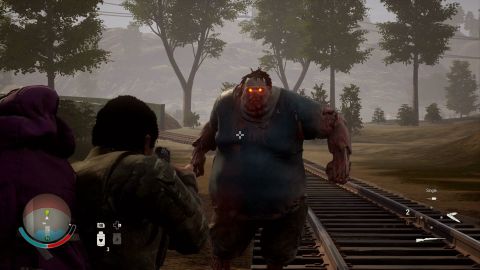
I was a big fan of the original State of Decay, and happily revisited it when it was re-released for Xbox One a few years ago. While the game was clunky, suffered from engine troubles, and was middling in scope, it represented something genuinely unique in a genre that continues to be saturated.
There are tons of prominent zombie games on the market. Whether they're open world affairs like Dead Rising or Dying Light, or something more competitive/co-operative like Day Z or Left 4 Dead, each offer their twists, but I'd happily say few are as unique as State of Decay.
The same is true for the sequel State of Decay 2, which launches on May 22, 2018, for Xbox One and PC.
In State of Decay, you're not a single hero. Instead, you take command of an entire community attempting to survive a devastating zombie apocalypse, which has wiped out nearly all infrastructure and society.
As a fan of Undead Labs and the long-term vision the studio has had for this concept, I found plenty of reasons to be disappointed with State of Decay 2. However, as I got deeper into the game, I found myself unable to put it down. State of Decay 2 will make you feel like the director of your very own zombie flick.
The horror of familiarity
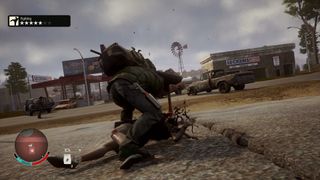
For those who played the first State of Decay, you'll remember how clunky it was. Shoehorned into CryEngine, State of Decay suffered from frame rate issues, physics quirks, and other annoyances that seriously held the game back. I was met with a similar sensation when I booted up State of Decay 2, which has now moved onto the Unreal Engine.
State of Decay 2 is not a pretty game. Like its predecessor, it sports lower-end production values, with quirky animations, sporadic environmental detail, and weak textures. Even on the Xbox One X, the game isn't as performant as you might hope, quite clearly dipping below 30 frames per second in some situations. State of Decay 2's presentation isn't bad by any means and it's far improved over the previous game, but it's not the massive leap to modernization you might have been hoping for.

Visuals can be adjusted to as long as the gameplay is solid, and this is where I was met with my second disappointment, at least initially. State of Decay 2 seems to recycle a lot of the same animations from the first game, including zombie executions, general attacks, and movement. That familiar awkward jogging animation returns, melee weapons almost hitting you in the face as they're glued to your hand. Super zombie "freaks" also feature a lot of the same attack patterns, offering no surprises.
All this familiarity made me feel like I was playing a remake, rather than a sequel. There has been a lot of polish on all of these aspects, for sure. But as someone who was close to the first game, many of the little things that annoyed me seem to have returned for the sequel, which represents a lack of attention to detail.
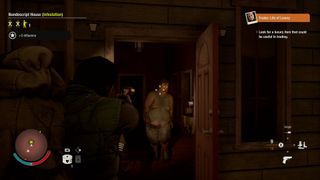
There are many small improvements Undead Labs could have made to improve the way the game feels. Take scouting towers for example. Like Assassin's Creed, you climb large towers and survey your surroundings to find buildings to plunder for all-important resources. But instead of whipping out a telescope or binoculars… you aim down the sights of your gun. Sure, that makes sense if you're holding a scoped rifle, but why would you do it with a handgun? The scouting towers even have a "binoculars" icon on the map. Additionally, you can still scout things even in the pitch black dead of night, which makes no sense at all.
These might seem like small, tiny nitpicks, but there are tons of little annoyances which blend to give an overall impression of low production values, which evokes the game's $30 price point. Still, it's easy to forgive a game for these sorts of things if the gameplay is fun. Thankfully, as you get deeper into the game, this is where State of Decay 2 starts to deliver in a big way.
Direct your own zombie apocalypse
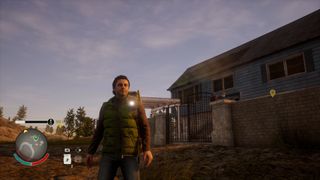
State of Decay 2 wraps a third-person action game inside an open world zombie survival RPG, throwing in strategic simulation elements for good measure. It's this unique amalgam of genres that represents the franchise's biggest strength, and improving this aspect of the game is clearly where Undead Labs spent most of its time.
The game begins to hint at a much richer simulation than its predecessor.
I was initially perturbed to find that the gameplay loop was almost identical to the first game too. After a tutorial narrative sequence, explaining the basics of combat and survival, you're given your first community base to build up and defend.
Like the first game, State of Decay 2 revolves around community management. Depending on which starter community you choose, you'll end up with a few characters with various skills and traits – some positive, some negative, and some incompatible. This is where the game begins to hint at a much richer simulation than its predecessor.
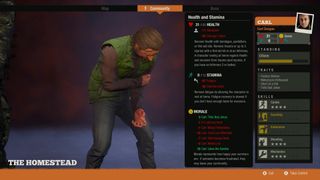
For example, one character in your group might be particularly susceptible to irritating jokes, while another might be insistent on, well, telling irritating jokes. These characters might come into conflict as a result, lowering the morale of your community, which has all sorts of negative effects on output and efficiency. You might even have a fight on your hands, which could result in medical supplies being wasted needlessly. No medical supplies means your community members will no longer passively heal injuries while resting between control sessions, which could lead to a slow agonizing death. And death means death in State of Decay 2; your individual survivors will not respawn.
State of Decay 2 has these simulation elements nailed down impeccably. Even the smallest events can have cascading effects that can either lift up your community, or if you've been managing it poorly completely shatter it. No-one will have a identical play-through.
Out in the wild
When you're not managing your community directly, building new facilities inside your base, or dealing with personal problems, you're out in the field. As you move around the ruins, you'll be battling zombies directly, scavenging for supplies, and meeting other groups of survivors.
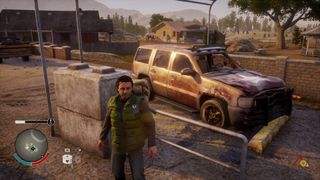
While Undead Labs hasn't revolutionized its open-world gameplay, it has polished it up a great deal against the first game. Vehicle handling is excellent, melee combat, while a little odd-looking in the animation department, is visceral and satisfying, and the gunplay has also been tightened. There's also a real sense of personal progression as your characters build up their skillsets through practice, learning how to perform new tasks, new attacks, or just learning how to tend to your crops better.
You will encounter other survivors who have various types of requests, which dynamically form the basis of the game's narrative. For example, I discovered a group of alcoholics who wanted me to help them build an alcohol distillery – booze is essential in the apocalypse too, after all. Ethanol is a precious resource for various things, so having a cheap source through this group seemed like a good idea.
I accompanied one of the group's members to an abandoned farm to look for parts and wheat when we were beset by a group of new blood plague zombies. Unlike regular zeds, plague zombies are actually infectious, and repeated exposure to them can induce the plague in your survivors. Managing the disease is only possible with an upgraded infirmary facility in your base (and someone with the medical skills to run it), making this particular brand of zombie incredibly dangerous.
While I avoided getting bitten myself, the drunken NPC I was with managed to get herself infected. I was faced with a choice, sacrifice my last blood plague cure – or let her turn into a vicious husk. Both options came with their own set of consequences, too.
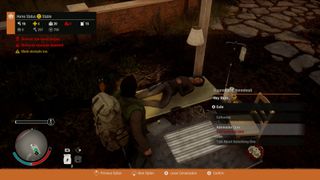
It's these sorts of decisions that form the dynamic drama of the game, creating truly moving moments in spite of the chaotic production values.
Discovering a deeper sim
As I got deeper and deeper into the game, I felt like I was peeling back layers of an endless undead onion. Base modules can not only be upgraded with new capabilities, but they can also be modded with tools and equipment found in the field. Adding a 3D printer to your workshop can improve your ability to repair and maintain your equipment, while adding a rainwater collector to your farm can improve your food yields. Throw in a survivor with gardening skills, and you can upgrade even further.
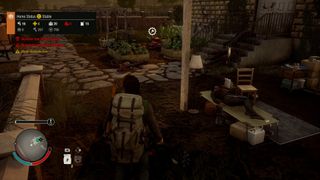
You can also set up outposts, just like in the first game, which provides passive buffs to your base management. Not enough beds? Grab a house with beds as an outpost. Need more food? Take a diner as an outpost. State of Decay 2 goes even deeper, though.
There are unique outposts scattered around the world that can provide much more powerful buffs in exchange for resources. I discovered a power station, which if captured, would offer my entire base electricity. Electricity naturally enhances the production of certain facilities and is even a requirement for certain upgrades – which might otherwise take up a mod slot, via a personal generator.
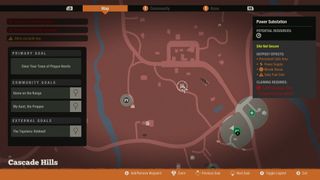
Capturing the power station became my central aim at that point, but assaulting it would require a large amount of influence (earned by completing tasks, killing powerful zombies, or trading goods with other survivor enclaves), and the destruction of a plague heart.
Plague hearts represent a new mechanic in State of Decay 2. These giant mounds of festering corpses emit a red haze in the local vicinity, usually located inside a building. They also spawn plague zombies, which are among the most dangerous enemies in the game, and are also incredibly tough to kill. Not only will local plague zombies react and attempt to defend the heart, but you constantly run the risk of infection too. Thankfully, the game gives you plenty of tools to get the job done.
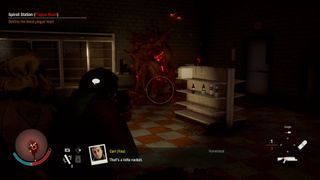

You can use noise-generating items like fireworks, combined with explosives, to create traps for large groups of zombies. The game also has tons of powerful weaponry to find, including grenade launchers, sniper rifles, and all sorts of moddable melee weapons. And for the first time, you can even upgrade vehicles into Mad Max-style death machines, allowing you to mow down groups of zeds with ease.
After getting over that initial disappointment, I've simply found it hard to put State of Decay 2 down. And thanks to multiplayer, you can enjoy the game with a few friends too. This is one area begging for improvements, though.
Decaying multiplayer structure
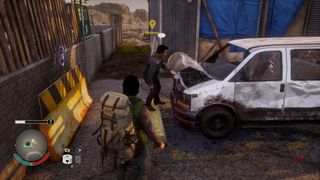
Microsoft touts itself as a cloud company, and indeed it is, rivaled only by Amazon in this space – so why did Redmond not invest in dedicated servers for State of Decay 2?
The game uses player-hosted matches which are disappointingly laggy across modest distances, and impossibly so across larger distances. Are you a European with a friend in the US? Good luck, because unless you have an insane connection speed, Microsoft seemingly doesn't want you to play State of Decay 2 together.
Microsoft should have invested in dedicated servers for State of Decay 2, and it's unforgivable that they didn't.
State of Decay 2 allows you to call random players into your game to help you complete missions or scavenge via a flare gun. Of course, you can also invite directly via your Xbox friends list on console and PC. While inside the host's game, you're there to help them out, putting your own world progression on hold. However, your community characters will retain any experience and skill levels they get while inside another's world, in addition to Xbox achievement progress, and loot retention. You can still access your own stockpile of items while in another community's world (when it isn't bugged... that is), and deposit any goodies you find for when you go back to single player. Additionally, State of Decay 2 rewards players who jump into other's games to help out, giving them increasingly lucrative rewards the longer you spend in another's game.
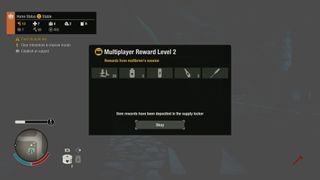
The game uses a tethering system to prevent you from going too far away from the host, but it's rather generous, at around 300 meters in-game. It's possible to go scavenging off in another direction, while your friend completes a separate mission (and loot is only shared when dropped on the ground, each player gets personal loot to find).
If you can find a solid connection, the multiplayer aspects of the game only elevate the experience, but it's maddeningly frustrating that Microsoft didn't bother to invest in dedicated servers here. Hell, let me rent one. Like Minecraft Realms, I'd rather pay for one than put up with the lag here.
Final thoughts

State of Decay 2 is by no means a perfect game. It retains the quirks of its predecessor, complete with mixed production values and a litany of smaller problems. That said, the game has never crashed on me, and is wonderfully atmospheric, with great music, sound, and masterful use of lighting to create fear and tension.
If you can forgive its quirks, State of Decay 2 will infect you like few other games can.
The combat gameplay has been tightened, but not revolutionized, and the game's three large open world maps should hold your attention for dozens of hours as you attempt to craft the perfect survivor community.
Where State of Decay 2 truly fails is in its implementation of multiplayer, relying on player-hosted games with weak connectivity, and by denying friends the ability to fully share a single world. Microsoft should have invested in dedicated servers for State of Decay 2, and it's unforgivable that they didn't.
Pros:
- Incredible and dynamic simulation gameplay.
- Visceral and satisfying combat.
- Dynamic narrative lets you craft your own story.
- Great value at $29.99 / $9.99 via Game Pass.
Cons:
- Missing attention to detail and polish.
- Multiplayer implementation is weak.
- Microsoft, the cloud company, says no to dedicated servers.
Where State of Decay 2 ascends is in its simulation, which has more depth, drama, and dynamism than ever before. The ways you can customize your community playstyle, focusing on trading over scavenging, or brute force over diplomacy and stealth, is seemingly endless. Depending on which hero you promote to leader completely changes the way you play, as you leverage their unique leadership facilities and bonuses.
If you can forgive its quirks, State of Decay 2 will infect you like few other games can.
State of Decay 2 is available on May 22, 2018 for Xbox One and Windows 10, priced at $29.99 with Xbox Play Anywhere support. You can also grab it on Xbox Game Pass for $9.99 per month.
This review was conducted on Xbox One X and a Surface Book 2 (GTX 1060) using a copy provided by Microsoft.

Jez Corden is a Managing Editor at Windows Central, focusing primarily on all things Xbox and gaming. Jez is known for breaking exclusive news and analysis as relates to the Microsoft ecosystem while being powered by tea. Follow on Twitter @JezCorden and listen to his XB2 Podcast, all about, you guessed it, Xbox!
